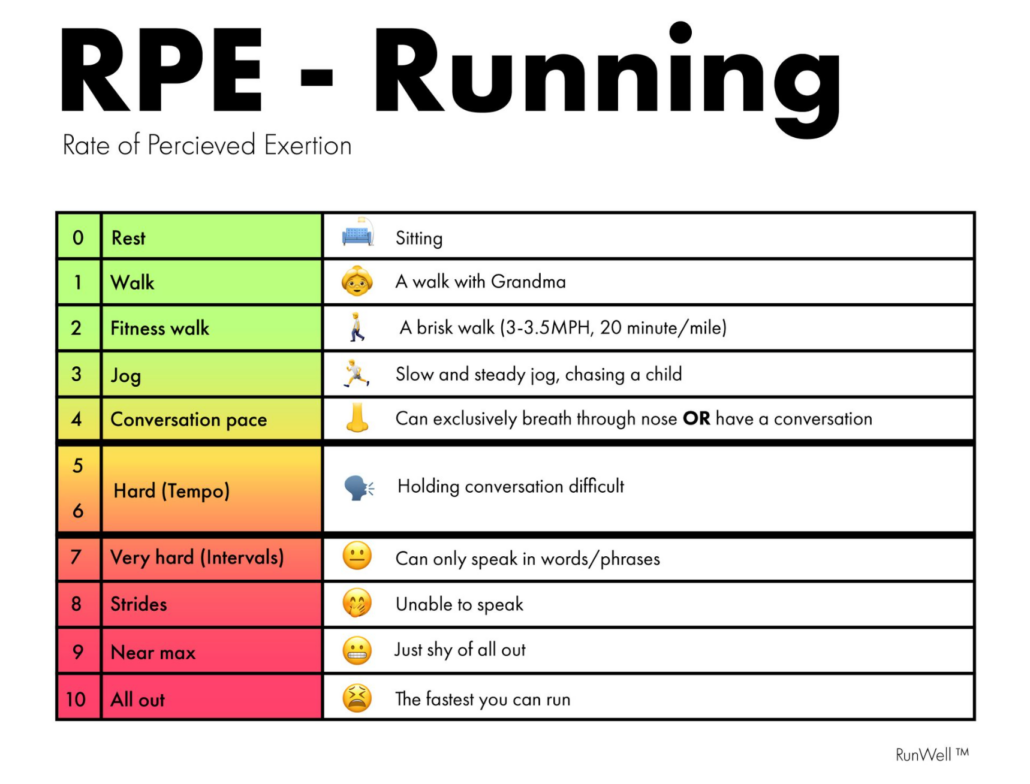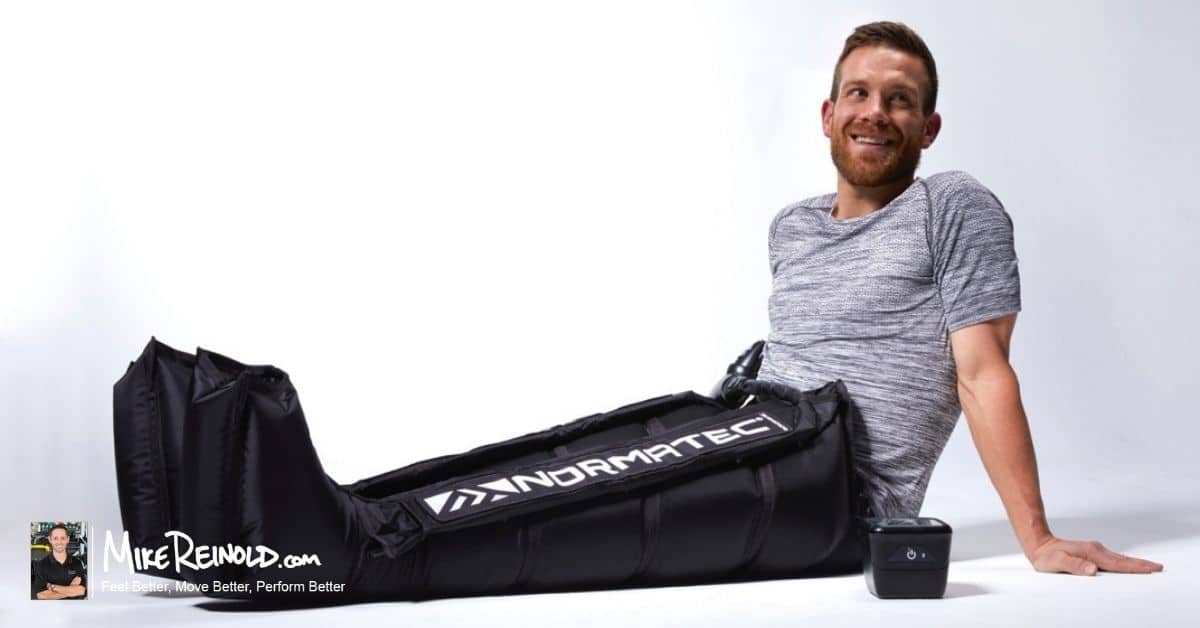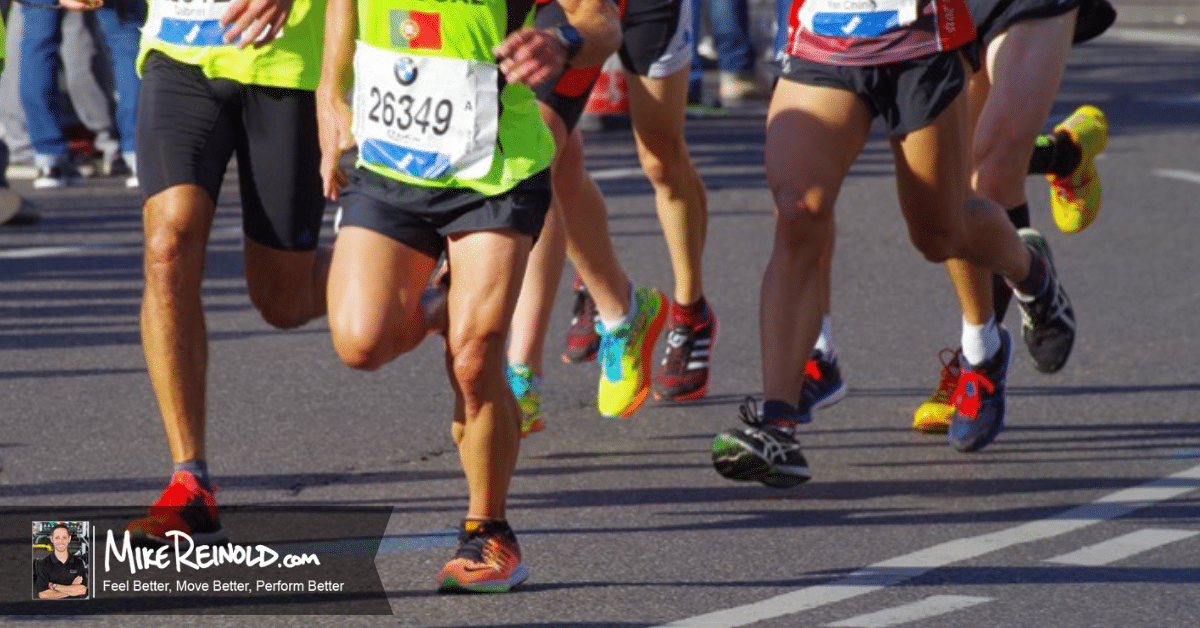For such a simple activity, runners excel in getting injured or sidelined from training due to pain.
As someone who’s made a career out of migrating runners out of the medical system (not to mention having to deal with my own niggles, aches, and pains), I’m both amazed and frustrated by the amount of suspect running advice out there.
It’s also disheartening that running often gets portrayed as harmful or damaging, especially given its slew of documented physical and mental health benefits, along with its practicality.
If only runners had access to a website with actionable guides, timeless training plans grounded in science, and a community of experts and fellow runners to lean on for support…
Well, that day has arrived! I’ve always yearned to draw on my 20+ years of experience as a physical therapist, coach, and avid runner to birth something big that empowers runners to reach their best while not falling victim to the medical system.
Enter RunWell.com.
Mike was kind enough to let me give you a lens into RunWell, so I figured it was only fair to share what I’ve learned goes into helping runners train with more confidence and less pain across their lifespan.
The information presented below is the crux of what I want clinicians and runners to know. I’ll specifically delve into the following topics:
- Why Consistency & Moderation Reign Supreme
- The Case For Using RPE (Rating of Perceived Exertion) and Duration to Plan Runs
- Understanding FDI (Frequency | Duration | Intensity)
- Autoregulatory Training: Red, Yellow, & Green Light Days
- Why Establishing “Point A” is Critical
- The Merits of Fitness Walking
- Moving Beyond Bodyweight When It Comes to Resistance Training
1. Consistency & Moderation Reign Supreme

If you run or work with runners, you’ve probably discovered nothing good is happening if you aren’t keeping up with a consistent run schedule… your muscles and bones lose capacity, your tendons become less stiff, and your cardiovascular fitness plummets.
As Louis Gifford said, “Disuse is catabolic.”
Therefore, it’s critical runners enjoy consistent and healthy training; otherwise, the body won’t adapt. No wonder the most successful runners tend to perform the crux of their training at lower intensities. Steve Magness eloquently summed up best training practices related to intensity distribution by recommending the following…
“Lots of easy
Occasionally go hard; vary it up
Very rarely, go see God.”
So if the goal is to reach your running best, please avoid replicating any heroic or jaw-dropping workouts you see on Strava or social media, as they could quickly derail your hard work and progress. Instead, stick to the adage… “consistency and moderation breeds adaptation.”
2. The Case for Using Time RPE (Rating of Perceived Exertion) Instead of Mileage and Pace.

Weekly mileage and pace overshadow all other metrics of running. It’s nearly impossible to talk to distance runners and coaches without mileage and pace dominating the conversation. However, research is starting to question the merits of such an approach for three main reasons:
- It doesn’t consider how a runner feels, which can be influenced by several factors (i.e., sleep, recovery, hydration, energy, motivation to train, menstrual function, and “life load“).
- It risks glorifying high-mileage or volume-based programs, which may or may not be in the runner’s best interest, pending their age, ability, experience with running, goal(s), and/or health status.
- It may underestimate the toll a workout takes on a runner’s body, thus increasing the risk of injury.
Instead of focusing on distance and pace, I encourage you to use duration and RPE to plan your runs. Doing so enables you to capture a training session’s external (duration) and internal loads (RPE), which allows you to calculate training impulse or training load. To do this, multiply the session RPE x session duration (in minutes) to determine the training load in arbitrary units (AU)…
For example, a 30-minute run performed at an average RPE of 4 would yield 120AU.
The beauty of using RPE to help plan your runs is that it correlates to heart rate (HR) and lactate concentrations. To help runners and coaches better conceptualize training intensity, I’ve included the RPE scale we designed and use daily in working with runners. If you employ distance and pace, I’m not suggesting you part with them, but rather, start considering your RPE as an additional reference point.

Lastly, one of the few instances where I’d caution against using RPE, is if you or a runner you’re working with a runner, who is recovering from a bone stress injury (BSI), more commonly known as a stress fracture.
Considering that your muscles and cardiovascular fitness will rebound faster than bone capacity during the recovery process, we must be cautious with speed or pace because the faster your run, the harder you have to contact the ground, which is associated with greater impact and contractile forces. In such instances, think of returning to running as “controlled bone-loading sessions.”
Additionally, runners are encouraged to adopt slower running speeds as research has shown going from 3.5m/s (~7.8mph) to 2.5m/s (~5.6mph) reduced tibial BSI likelihood by half.
3. FDI…Frequency > Duration > Intensity

If you are new to running or returning to running following injury, how you plug into training is critical. A simple acronym that often proves helpful to guide your run planning is FDI…frequency, duration, intensity.
The goal for most distance runners is to get into a rhythm with training. A good way to accomplish this is by running at a conversation pace every other day (4/10 going off our RPE chart). This will promote tissue conditioning while affording adequate recovery, especially regarding type I collagen synthesis, a significant component of tendon and bone. If you’ve taken a hiatus from running or are coming off an injury, be prepared to start with a progressive walking or walk-run routine before working up to continuous running.
As you prove tolerance to running every other day and pending your goals, a sensible next step is to increase the duration of your running. For most runners, working up to an hour of running is reasonable. From there, the long run can be extended, especially if training for a half or full marathon, given the greater performance demands of those events.
At this point, you can either consider increasing the running frequency by incorporating some back-to-back days or layer in some intensity in the form of strides (short, fast bouts of running for 10-15s that challenge turnover and coordination), tempo efforts, or short intervals. As mentioned above, running fast or uphill places greater demands on the body, especially the lower extremities. It is critical to ensure a runner has the requisite tissue capacity and feels fresh or recovered going into these “hot sessions.”
4. Autoregulation – Understanding Red, Yellow, and Green Light Days

Daily fluctuations in human performance are expected for various reasons, including but not limited to sleep, nutrition, soreness, mood state, fatigue, illness, menstrual function, and “life load.” As an athlete, it’s perfectly normal to feel like you’re “firing on all cylinders” one day and “flat” the next. An athlete’s training or rehab should therefore mirror their current status and ecosystem to optimize adaptations by challenging them in a manner that closely aligns with their current function and training goals.
Mel Siff popularized this form of periodization (planning), which adjusts to an athlete’s day-to-day or week-to-week based on an assessment of their performance to optimize training and safeguard against overtraining and injury. Autoregulatory training goes hand in hand with RPE.
Such a framework is also advantageous from a psychological standpoint as it gives athletes greater decision-making authority by allowing them to self-select training sessions based on their perceived capability to perform. In effect, runners are more likely to enjoy training while sticking to the program.
Below is the traffic light system I use to encourage runners to embrace sound-decision making while keeping them on track with training.
🟢 GO
If you feel: rested, energetic, and motivated, it’s a green light day. A safe time to push, but don’t get greedy by overdoing it.
🟡 BE SENSIBLE
If you feel: tired, stressed, sore, sluggish, low energy, or unmotivated, treat the situation as a yellow light day. Consider adjusting your workout by shortening your run, slowing down, and nixing any prescribed intervals.
🔴 RETREAT
If you feel: exhausted, coming off a poor night’s sleep, or recently experienced an negative life event (such as losing a loved one), consider skipping the workout or substituting a walk for your training.
And let’s not forget about “The Rule of Thirds...”
“When you’re chasing a big goal, you’re supposed to feel good a third of the time, okay a third of the time, and crappy a third of the time. If the ratio is off and you always feel good, you’re not pushing yourself enough. Likewise, if you always feel bad, you might be fatigued and need to dial things back.”
-Ian Dobson (Alexi Pappas’ running coach)
Lastly, remember that your training will never be picture-perfect, though good things are bound to happen if you train consistently and sensibly and embrace autoregulatory training principles.
5. So What’s Point A?

As a clinician-coach, I work with runners across the injury-to-performance spectrum. Regardless of where one falls, the first order of business when someone reaches out for my help is to establish “Point A,” as Dan John likes to say.
To accomplish this, I take EVERY runner through a battery of functional assessments (AKA physical performance tests – PPTs), which challenge runners to load through specific regions and tissues of the body in a manner that replicates the performance demands of running. Not only are they essential in determining one’s readiness to run, but they can also distinguish between injured and healthy runners, establish gaps in a training program, identify impairments, and refine decision-making.
Rather than go through each assessment, I figured it would be easier for readers to download my PDF checklist, which also provides specific benchmarks.
Lastly, remember that the ultimate PPT in working with runners is watching them run since running is a hierarchical skill.
6. The Merits of Fitness Walking

Watch any world-class athlete train or compete, and you’ll quickly notice they all have a warm-up and cool-down routine that prepares them for the impending workout and helps them recover for the next one, respectively. This routine is something they ritualize and never skip.
The most practical way to approach a warm-up for running is to start with a 10-minute “fitness walk,” which involves brisk walking (3.0-3.5mph) with arms pumping like running. It elevates your heart rate, promotes blood flow to the working musculature, and allows a nice transition and cognitive shift as you go from sedentary to active. I also like incorporating light skipping and side shuffling (10-20s bouts) into the walking warm-up for tendons’ sake. Although many folks often skip the walking warm-up because they’re time-crunched or don’t value this portion of the workout, I’d strongly encourage you to make it a part of every run. It’s also my contention that too many runners needlessly perform various mobility and activation drills when they could go for a walk.
I also want to remind runners that there is no reason to feel defeated by incorporating short (30-90sec) walking breaks into your long runs. Not only will this allow you to rehearse or take in some nutrition, but it also helps you maintain consistent pacing and breaks up long efforts into parts, which has a psychological benefit. For most recreational marathoners, a walk-run strategy will likely allow you to have a faster finishing time if you elect to do a race, as it prevents needing to slow down excessively during the race
Finally, remember to end every run with a five-minute walking cool-down. This will help initiate the recovery process and pave the way for the next training session while allowing you to reflect on the workout you just completed.
7. Moving Beyond Bodyweight When It Comes to Resistance Training

If there’s one thing a runner should do outside of running beyond staying on top of wellness factors such as sleep and fueling, it’s to engage in resistance training. Unfortunately, a common tendency among runners is to focus on bodyweight or lower-level exercises that fail to elicit the desired adaptations most runners should strive for.
The bottom line is that to run, your muscles must handle high contraction intensity, your tendons must store and release energy, and your bones need to withstand high contractile/tugging forces and strain. A good resistance training program should target these aspects.
Unfortunately, runners either fail to engage in resistance training or, if they do, they underload or don’t progress the exercises appropriately, which fails to create an appropriate stimulus to elicit the desired adaptation(s).
It’s no mystery what tissues and regions to target as a runner, considering the classic study from Dorn and colleagues.
Although it is beyond the scope of this post to take you on a deep dive related to resistance training, I want to provide some recommendations to give you greater direction the next time you go to the gym.
- Aim to strength train 2x per week, ideally on non-running days. If you have to do it on the same day as a run, feel free to do it directly afterward if it is a low-intensity run or 3-4 hours after if it is a more challenging run.
- Select a combination of compound movements (squats, deadlifts), single-leg exercises (step-ups), plyometrics (pogo jumps, jump rope), and isolation drills (knee extensions, calf raises).
- From a sequencing standpoint, and following your preferred warm-up, complete drills in the following order… plyometrics > compound movements > single-leg drills > isolation exercises.
- Aim to perform 2-4 sets per exercise while using loads corresponding to 70-85% of a one rep max (RM), especially for heavy slow resistance (HSR) training.
- If you work with loads that keep you in the 6-15 rep range, a lot of good is bound to happen.
- Aim to target the major muscle groups of the lower extremity with an emphasis on the calves (single-leg calf raises), quads (some form of a squat variation), and outer hip (band-resisted lateral toe taps.
- Remember that isolation exercises such as knee extensions and calf raises are necessary for targeted loading, which is essential for tendon health.
- The best time to initiate a focused strength training block is a few weeks after a runner finishes an A-race or wraps up their season, so their lifting doesn’t interfere with their run training.
- Remember that building strength serves as a vehicle to enable runners to enhance performance variables such as power and rate of force development.
Summary:
- Adaptations only occur through consistency of training, so be sensible and prioritize low to moderate intensity for the crux of your workouts.
- Prioritize using a rating of perceived exertion (RPE) and duration rather than pace and mileage to plan your runs. It will be liberating and help you more accurately capture the toll of the workout.
- A simple approach to progressing your runs if you are new to running or recovering from an injury is FDI (Frequency | Duration | Intensity).
- Strongly consider applying an autoregulatory approach to planning your runs by considering if you’re at a red, yellow, & green in life as well as going into that particular session.
- Make it a priority to establish where “Point A” or where you are at this very moment by going through the physical performance tests. In turn, you will better know how to get to “Point Z” or the goal/destination.
- Fitness walking is an under-appreciated form of training that runners should incorporate into their warm-up, cool-down, and long runs.
- Regarding resistance training, bodyweight exercises are an OK starting point, especially for those with little to no experience with strength training. However, at some point, external loading will be necessary to provide an adequate stimulus if the goal is strength and power development.
About The Author
Chris Johnson, PT is a a Seattle-based physical therapist, performance coach, multiple time Kona qualifier, and international speaker that specializes in working with runners and endurance athletes. He’s the founder of Zeren PT LLC, providing unparalleled physical therapy and performance coaching for multisport athletes in the Pacific Northwest, co-founder and CEO of RunCadence LLC, an IOS app that helps runners apply step rate manipulation to their training, and co-founder of RunWell.com, an online community for runners.
References:
- Alentorn-Geli E, Samuelsson K, Musahl V, Green CL, Bhandari M, Karlsson J. The Association of Recreational and Competitive Running With Hip and Knee Osteoarthritis: A Systematic Review and Meta-analysis. J Orthop Sports Phys Ther. 2017 Jun;47(6):373-390.
- Blagrove RC, Howatson G, Hayes PR. Effects of Strength Training on the Physiological Determinants of Middle- and Long-Distance Running Performance: A Systematic Review. Sports Med. 2018 May;48(5):1117-1149.
- Casado A, Hanley B, Santos-Concejero J, Ruiz-Pérez LM. World-Class Long-Distance Running Performances Are Best Predicted by Volume of Easy Runs and Deliberate Practice of Short-Interval and Tempo Runs. J Strength Cond Res. 2021 Sep 1;35(9):2525-2531.
- Dorn TW, Schache AG, Pandy MG. Muscular strategy shift in human running: dependence of running speed on hip and ankle muscle performance. J Exp Biol. 2012 Jun 1;215(Pt 11):1944-56. doi: 10.1242/jeb.064527. Erratum in: J Exp Biol. 2012 Jul 1;215(Pt 13):2347.
- Edwards WB, Taylor D, Rudolphi TJ, Gillette JC, Derrick TR. Effects of running speed on a probabilistic stress fracture model. Clin Biomech (Bristol, Avon). 2010;25:372-377.
- Fokkema T, van Damme AADN, Fornerod MWJ, de Vos RJ, Bierma-Zeinstra SMA, van Middelkoop M. Training for a (half-)marathon: Training volume and longest endurance run related to performance and running injuries. Scand J Med Sci Sports. 2020 Sep;30(9):1692-1704.
- Foster C, Florhaug JA, Franklin J, Gottschall L, Hrovatin LA, Parker S, Doleshal P, Dodge C. A new approach to monitoring exercise training. J Strength Cond Res. 2001 Feb;15(1):109-15. PMID: 11708692.
- Helms ER, Cross MR, Brown SR, Storey A, Cronin J, Zour- dos MC. Rating of perceived exertion as a method of volume autoregulation within a periodized program. J Strength Cond Res. 2018;32(6):1627–36
- Mann J. B.. The Effect of Autoregulatory Progressive Resistance Exercise Vs. Linear Periodization on Strength Improvement in College Athletes. J Strength Cond Res. 2010;24:1718–23.
- Markotić V, Pokrajčić V, Babić M, Radančević D, Grle M, Miljko M, Kosović V, Jurić I, Karlović Vidaković M. The Positive Effects of Running on Mental Health. Psychiatr Danub. 2020 Sep;32(Suppl 2):233-235.
- Matijevich ES, Branscombe LM, Scott LR, Zelik KE. Ground reaction force metrics are not strongly correlated with tibial bone load when running across speeds and slopes: Implications for science, sport and wearable tech. PLoS One. 2019 Jan 17;14(1):e0210000.
- Oja P, Titze S, Kokko S, Kujala UM, Heinonen A, Kelly P, Koski P, Foster C. Health benefits of different sport disciplines for adults: systematic review of observational and intervention studies with meta-analysis. Br J Sports Med. 2015 Apr;49(7):434-40.
- Paquette MR, Napier C, Willy RW, Stellingwerff T. Moving Beyond Weekly “Distance”: Optimizing Quantification of Training Load in Runners. J Orthop Sports Phys Ther. 2020 Oct;50(10):564-569.
- Rowe GC, Safdar A, Arany Z. Running forward: new frontiers in endurance exercise biology. Circulation. 2014 Feb 18;129(7):798-810.
- Siff, MC. Supertraining. Denver, Co: Supertraining Institute, 2000.
- Suchomel TJ, Nimphius S, Stone MH. The importance of muscular strength in athletic performance. Sports Med. 2016;46(10):1419–49.
- Thorpe RT, Atkinson G, Drust B, Gregson W. Monitoring fatigue status in elite team-sport athletes: implications for practice. Int J Sports Physiol Perform. 2017;12(Suppl 2):S227–34.
- Vivar C, van Praag H. Running Changes the Brain: the Long and the Short of It. Physiology (Bethesda). 2017 Nov;32(6):410-424.
- Warden SJ, Edwards WB, Willy RW. Optimal Load for Managing Low-Risk Tibial and Metatarsal Bone Stress Injuries in Runners: The Science Behind the Clinical Reasoning. J Orthop Sports Phys Ther. 2021 Jul;51(7):322-330.
- Willy RW, Davis IS. The effect of a hip-strengthening program on mechanics during running and during a single-leg squat. J Orthop Sports Phys Ther. 2011 Sep;41(9):625-32.
Images
- https://unsplash.com/photos/X2CxUXFqKcM
- https://unsplash.com/photos/mNGaaLeWEp0
- https://unsplash.com/photos/mNGaaLeWEp0
- https://unsplash.com/photos/tG4waP7YiAg
- https://unsplash.com/photos/jqiAU_JQGyk
- https://unsplash.com/photos/RkBTPqPEGDo
- https://unsplash.com/photos/ljoCgjs63SM
- https://unsplash.com/photos/uwk8IS-HfJ8





